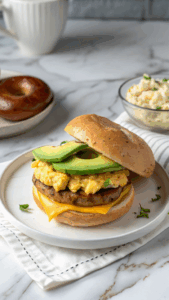
Switching to a gluten-free lifestyle can feel overwhelming at first—especially when you’re navigating crowded store aisles and unfamiliar ingredient labels. Whether you’re gluten-intolerant, have celiac disease, or are choosing to cut gluten for wellness reasons, having a reliable gluten-free grocery guide makes all the difference.
In this guide, we’re breaking down exactly what you need to know to shop smarter, eat better, and feel confident about what goes into your cart—and your body.
Gluten is a protein found in wheat, barley, and rye. It’s responsible for the stretchiness in dough and is commonly used in processed foods as a thickener or stabilizer.
Whether it’s for medical or personal reasons, going gluten-free requires careful label reading and smart substitutions.
Before you head to the store, remember these golden rules:
Here’s a beginner-friendly gluten-free grocery guide to help build your pantry and fridge:
Many packaged foods contain hidden gluten, even if they seem safe at first glance. Read labels carefully for these sneaky ingredients:
Produce: Spinach, zucchini, avocado, bananas, berries
Grains: Quinoa, brown rice, gluten-free oats
Protein: Chicken breast, salmon, black beans, eggs
Dairy/Alt: Almond milk, Greek yogurt, shredded cheese
Snacks: GF granola bars, popcorn, almond butter
Pantry: Olive oil, tamari, canned tomatoes, chickpeas
Frozen: Riced cauliflower, stir-fry veggies
Many women who reduce gluten notice less bloating, improved energy, and better skin. That’s because a gluten-free diet—especially when focused on whole foods—can:
Starting a gluten-free diet can be intimidating, but with the right tools and a supportive guide, it becomes a path to greater wellness. Use this gluten-free grocery guide to shop with confidence and fuel your body with delicious, nourishing food.

Tired of your old gym bag? Discover the best cute, stylish, and functional gym bags for women. From chic totes to versatile backpacks with shoe compartments, find the perfect bag to take you from workout to weekend in style.

Feeling bloated or hormonally imbalanced? Your gut may hold the key. Discover the best fermented foods for women’s health, how they improve digestion, mood, and hormonal balance, and how to easily add them to your diet.

Want to build strong, sculpted legs quickly? Discover the most effective compound exercises for women that target multiple leg muscles simultaneously for faster growth and a powerful lower body. Say hello to leg day gains!

Upgrade your morning with the ultimate high-protein breakfast bagel! This recipe stacks a toasted bagel with a cheesy cottage cheese egg scramble, savory sausage, and creamy avocado for over 40g of protein.

Feeling stressed and your budget is tight? Discover practical and affordable self-care ideas designed for women. Learn how to nourish your mind, body, and soul without spending a dime (or very little!).

Ditch boring breakfasts! Make this high-protein Cheesy Spinach & Egg White Quesadilla in under 10 minutes. A healthy, delicious, and easy way to fuel your busy morning.
© Custom Curves the Fitness Blog 2024